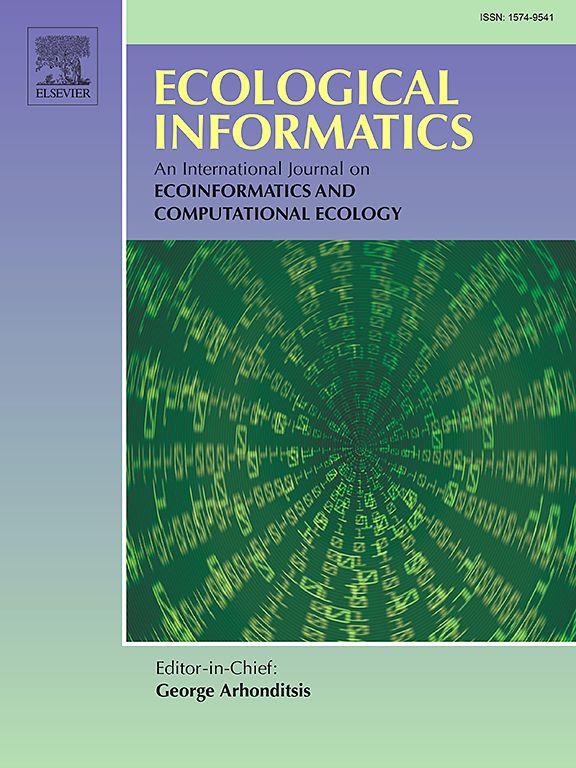对流的后处理允许使用UNets进行降水预报
IF 5.8
2区 环境科学与生态学
Q1 ECOLOGY
引用次数: 0
摘要
可靠的降水预报对公共安全、农业和水资源管理等部门至关重要。虽然数值天气预报(NWP)模式构成了现代预报的支柱,但其固有的局限性和大气方程的混沌行为经常导致误差,需要后处理来提高精度和量化不确定性。本研究评估了为加那利群岛量身定制的逐时降水概率后处理模型,旨在提高集合预报的准确性。基于unet的模型采用两种策略进行了探索:一种是将所有25公里尺度允许对流的集合预报模拟作为输入,另一种是应用降维技术来降低输入的复杂性。将这些模型与传统的基准测试进行比较,如使用集成模型输出统计(EMOS)的截尾移位伽马分布(CSGD)、模拟集成方法和通过MLP架构的深度学习策略。在对结果的分析中,不仅考虑了现有气象站预报的可靠性,而且考虑了UNet模式对整个区域降水预报的泛化能力。UNet模型通常改进了原始WRF集成,并且与传统方法相比表现相当或更好。概率(CRPSS, BSS)和确定性(MAESS, RMSESS,相对偏差)技能得分显示出改进,特别是在预测小到中等降雨方面。综合梯度技术显示,纳入高度地形图对UNet的产出有显著影响,强调了地形数据在降雨预报中的关键作用。此外,UNet模式显示出很强的空间泛化能力,显示出它们在观测网络有限的地区进行业务预报的潜力。本文章由计算机程序翻译,如有差异,请以英文原文为准。

Postprocessing of convection permitting precipitation forecast using UNets
Reliable precipitation forecasting is crucial in sectors like public safety, agriculture and water management. Although Numerical Weather Prediction (NWP) models form the backbone of modern forecasting, their inherent limitations and the chaotic behavior of atmospheric equations often result in errors, requiring postprocessing to improve accuracy and quantify uncertainties. This study assesses hourly precipitation probabilistic postprocessing models tailored for the Canary Islands, aiming to improve ensemble forecasting accuracy. UNet-based models were explored using two strategies: one incorporating all 25 km-scale convection-permitting ensemble forecast simulations as input, and another applying dimensionality reduction techniques to reduce input complexity. These models were compared to traditional benchmarks like the Censored Shifted Gamma Distribution (CSGD) with Ensemble Model Output Statistics (EMOS), the Analog Ensemble method and deep learning strategies through MLP architectures. In the analysis of the results, not only the reliability of the predictions for the set of available meteorological stations was considered, but also the generalization capacity of the UNet models to obtain precipitation predictions for the whole region.
UNet models generally improved the raw WRF ensemble and performed comparably or better than traditional approaches. Probabilistic (CRPSS, BSS) and deterministic (MAESS, RMSESS, Relative Bias) skill scores demonstrated improvements, particularly in forecasting light-to-moderate rainfall. The Integrated Gradients technique revealed that incorporating a height terrain map significantly influenced UNet’s outputs, emphasizing the critical role of topographic data in rainfall forecasting. Furthermore, UNet models demonstrated strong spatial generalization, showcasing their potential for operational forecasting in areas with limited observational networks.
求助全文
通过发布文献求助,成功后即可免费获取论文全文。
去求助
来源期刊

Ecological Informatics
环境科学-生态学
CiteScore
8.30
自引率
11.80%
发文量
346
审稿时长
46 days
期刊介绍:
The journal Ecological Informatics is devoted to the publication of high quality, peer-reviewed articles on all aspects of computational ecology, data science and biogeography. The scope of the journal takes into account the data-intensive nature of ecology, the growing capacity of information technology to access, harness and leverage complex data as well as the critical need for informing sustainable management in view of global environmental and climate change.
The nature of the journal is interdisciplinary at the crossover between ecology and informatics. It focuses on novel concepts and techniques for image- and genome-based monitoring and interpretation, sensor- and multimedia-based data acquisition, internet-based data archiving and sharing, data assimilation, modelling and prediction of ecological data.
 求助内容:
求助内容: 应助结果提醒方式:
应助结果提醒方式:


